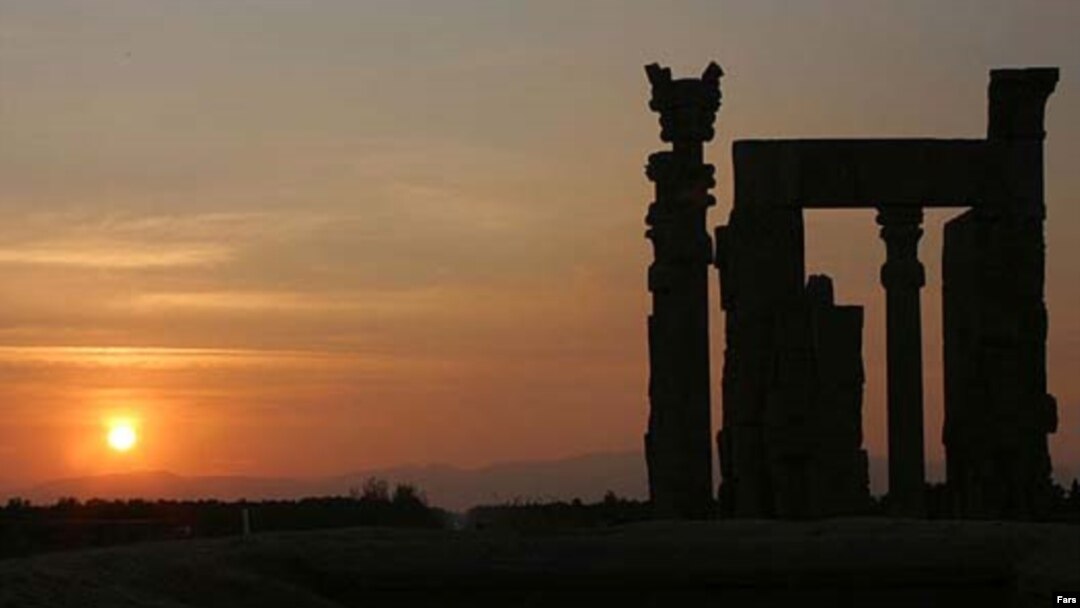Water Damage
The flooding is expected to greatly increase humidity in the environs and this change is what protesters say could damage the nearby Pasargadae plain, which includes the sixth century B.C. tomb of Cyrus the Great, the founder of the first Persian Empire under the Achaemenid dynasty.
Cyrus's successors built another Iranian landmark, the palatial complex at Persepolis that is near the southern city of Shiraz. Activists say increased humidity will damage the Cyrus mausoleum, while flooding would cover areas that have not yet been fully excavated.
Supporters of the Sivand project point to the hydroelectric power that the dam will generate for the area and possibilities for economic growth.
The dam was due to begin filling with water on February 19, "Kargozaran" reported on February 15, despite protests on February 12 in Tehran by environmental activists at the Energy Ministry and in front of parliament two days later. It will take one year to fill.
Teams of Iranian and foreign archeologists from Japan, Germany, Italy, France, and other countries have been working feverishly to finish archeological excavations at sites due to be flooded.
Organized Protests
A letter of protest was also signed by 30 groups and parties, including prominent formations like the reformist Islamic Revolution Mujahedin Organization, the Association of Qom Seminary Researchers and Teachers, a reformist clerical grouping, and members of the graduate-wing of the Office to Consolidate Unity, Iran's leading umbrella student group, the daily "Etemad-i Melli" reported on February 13.
Their statement observed that the water would not only threaten sites, but flood traditional grazing grounds for nomadic tribes, and drown at least 8,000 trees -- some of them 500 years old -- that they claim are unique in their genetic variety.
"Etemad-i Melli" cited Hamid Baqai, the deputy head of the Cultural Heritage Organization, as saying on February 12 that the Energy Ministry has made several studies on the dam and consulted with some archeologists who he says report that there are no longer any excavations to be done in the area.
Baqai told ISNA that unspecified protective measures could be taken to protect Cyrus's mausoleum. He said studies on the dam were carried out 40 years ago, and the dam has been constructed during the last 11 years. He asked: "This dam was not built secretly overnight, so...where were these opponents before?"
Imad Afrugh, the head of the parliamentary Culture Committee, said on February 14 that protestors should provide solid evidence of the damaging impact of the dam in order for the committee to discuss the matter with the relevant bodies, "Kargozaran" reported. But he said parliamentarians cannot challenge the ministry on the basis of expressions of "love" or "devotion" for buildings.
Critical Issues
There are several important aspects at play in this issue: one being the need to efficiently use water in a country where water resources are scarce. Another is a perception of government indifference to public demands.
Yet another aspect concerns national identity. Since the 1979 Islamic Revolution, Iran's government and especially its more conservative clerics and politicians have often underemphasized Iran's pre-Islamic heritage, sometimes even expressing contempt for it.
The Sivand Dam project may seem to some Iranians like the latest in a list of actual, reported, or rumored instances of government hostility to non-Islamic Iran.
For some time after the revolution, for example, some Iranians alleged that the government wanted to ban Novruz, the ancient new year holiday that falls on March 21.
There have also been persistent rumors that after the revolution, "a mob" of revolutionaries went to the Persepolis site to loot and chisel away its bas-reliefs, amid the indifference of officials.
Disrespect For Pre-Islamic History?
This alleged hostility to the non-Islamic past has its logic: this heritage is not religious and it is closely associated with monarchs and princes the present Islamic regime denounces.
Iranians will almost certainly not have missed the contrast between the government's attitude to Persian heritage and the anger voiced by the highest officials over past or recent damage to Shi'ite shrines in Iraq or the Al-Aqsa Mosque in Jerusalem.
The indignation was, of course, at the desecration of religious sites -- not mosques as historical buildings. But these strengthen a perception among Iranians that officials are more concerned about Muslims and Shi'a in general -- or even Palestinians -- than they are for Iran.
At the same time, the protests and the statement against the Sivand Dam along with certain editorials in newspapers show that the government has not yet forged the communal identity it cherishes for Iran -- one of strictly pious, Shi'a Muslims.
Finally, the protests show that the civil society that was breathed to life by the 1997-2005 governments of Mohammad Khatami remains alive. One may be surprised to read in an editorial, written on February 13 in "Etemad-i Melli" -- 28 years after a revolution that toppled the Persian monarchy -- makes references to Cyrus the Great and to his being "one of Iran's greatest rulers."
Ancient Persepolis
A gallery of images about one of Iran's most spectacular archeological sites.


